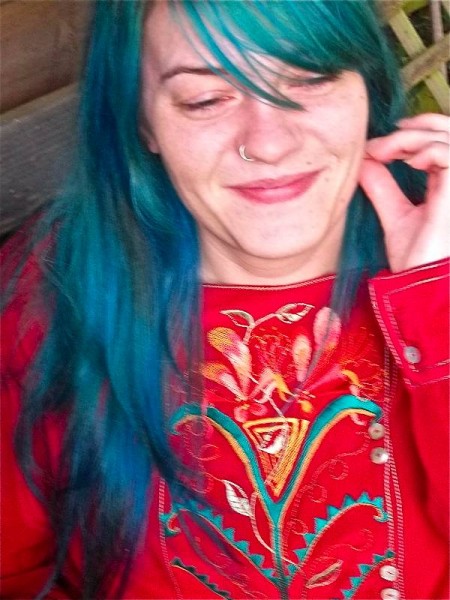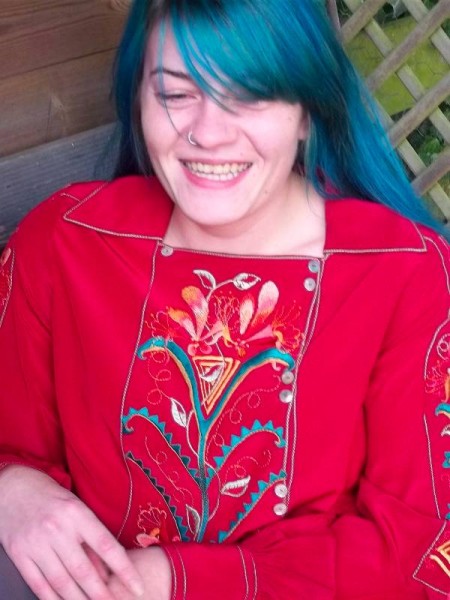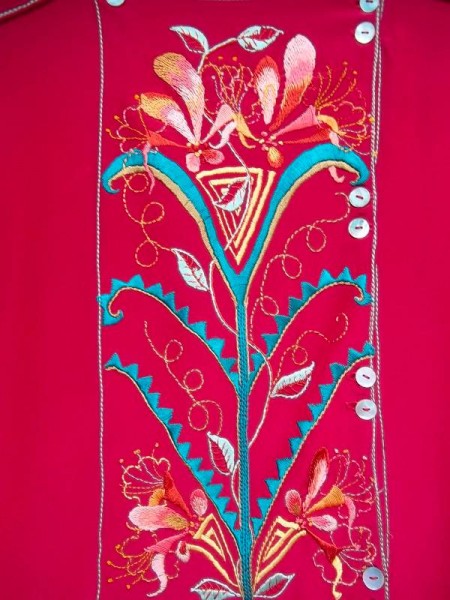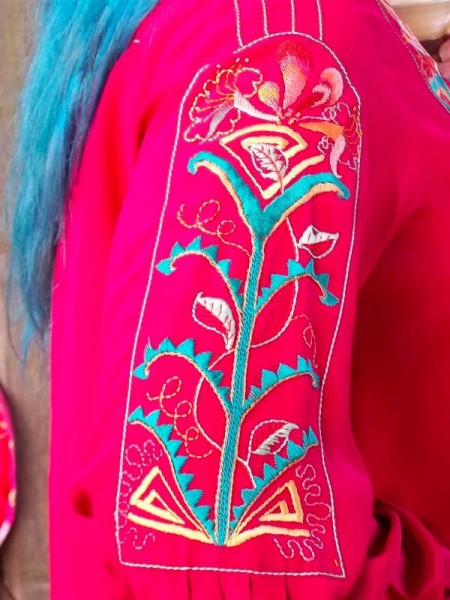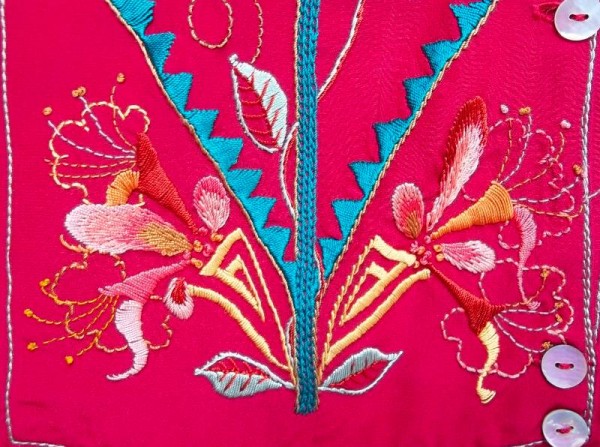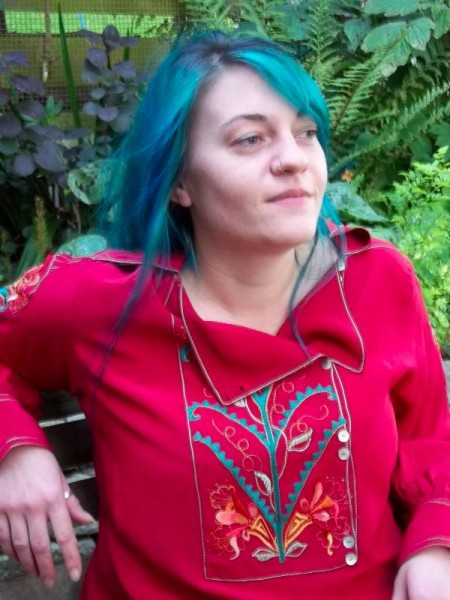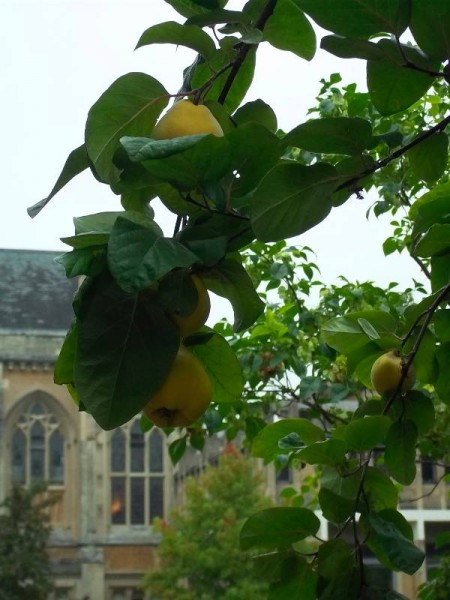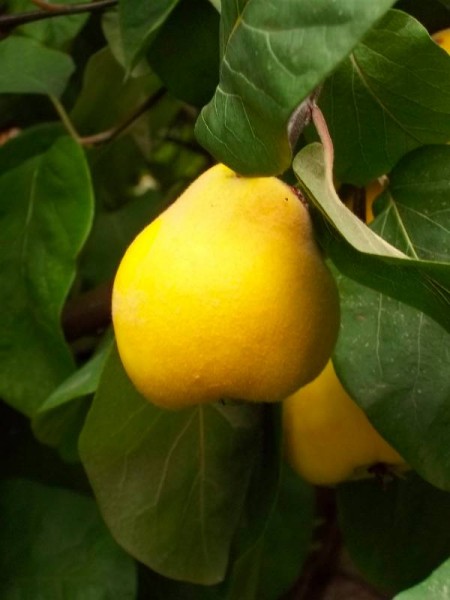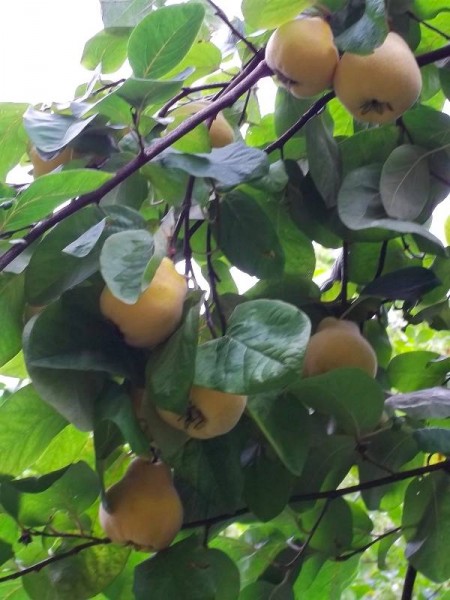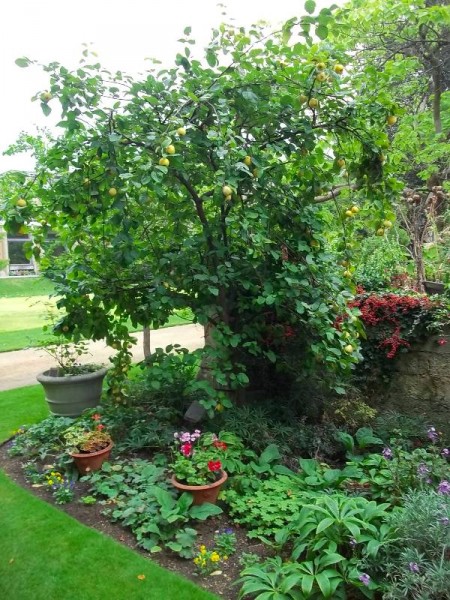There is something very alluring about red of a certain shade – and this is certainly the shade that excites me. I once painted a room (a bedroom used as a study) this colour and I had the overwhelming feeling I was covering the walls with liquid lipstick. The dining room at the vicarage is painted this colour but fortunately the longest wall is covered completely by bookcases (though the back of the bookcases are painted the same colour) and there are paintings on the other walls. I say fortunately because I have come to the conclusion that daily use of a room painted in such an intense colour can be very trying. It’s wonderful with low lights and candles and people around the dining table eating but in the middle of the day I find it draining – perhaps it absorbs too much light. Similarly I wouldn’t want to wear such an intense red everyday. However, daughter no. 3’s green hair looks fantastic with the red shirt.
The inspiration behind this shirt lay in clothes of the designers Zandra Rhodes (for her spikey, strongly drawn lilies) and Bill Gibb (for his heavily embroidered panels set in floaty fabrics). Bill Gibb’s clothes represented design liberation in the form of the different fabrics he put together, matched against type, as if dialectical fashion had become the new order where thesis/antithesis/synthesis, a fashion syllogism, had chased away for ever the former fashion no-nos of bringing together in one garment fabrics as different as chiffon and leather, silk and tweed or knits and velvet, to produce surprising but exquisitely wearable evening dresses, winter coats or little jackets.
Bill Gibb died of cancer in 1988 aged 44. Although he had felicitous associations with those skilled in other crafts, like Kaffe Fassett (knitting), his business partnerships were unsuccessful more than once. In spite of important recent retrospectives at the Fashion Museum, Bath in 2008 and at the Fashion and Textile Museum in Bermondsey, London (which museum was founded as the culmination of a lifelong dream by Zandra Rhodes) in 2008-9, he is still little remembered outside fashion cognoscenti. Fascinatingly, at least 2 major British clothes designers, Giles Deacon and enfant terrible John Galliano have credited Bill Gibb as a major influence on their work. I hadn’t realised this until I read it recently but immediately I heard it, it became so glaringly obvious that I count my self distinctly dense for not having seen it for myself. John Galliano’s voluminous silhouettes, the textiles and the details he quotes from historical fashions but to which he gives an unexpected twist, his use of embroidery, ribbons, silk flowers – all these things you could see first in Bill Gibb’s clothes. I find it less easy to see the latter’s influence in Giles Deacon’s designs except in his silver painted leather. But (with no documentary evidence) I think I detect the thread of Bill Gibb’s flair in some of Christopher Kane’s designs, in particular his odd juxtapositions of material, e.g. pleated gingham and rose embroidered chiffon and leather dresses embroidered with bouquets of the brightest of coloured flowers.
Truly now anything goes, although I find it hard to look at some combinations of extremely different textiles without being at a loss to guess how to wash them. My blouse can be washed, indeed has been and, being pure silk in every detail from the Güterman silk used for the seams, to the button hole twist (also Gütermann) used for embroidery, to the fabric itself, it washes beautifully. (I always have a slight panic as I set out to iron things like this as they lie on the ironing board crumpled and crinkled emanating the accusation that this time you have really got it wrong and you’ll never restore it to its former smooth sleekness. But I always manage it.)
I loved Gütermann buttonhole twist and at one time had a fantastic supply of every jewel-like colour you could imagine. Now, I perhaps have 20-30 left but they are all the wishy-washy shades I thought would be incredibly useful but which never were. At some point Gütermann changed their buttonhole twist and made it finer and less twisted together and when that happened I had to make a complete change to cotton embroidery thread. I should look into the other silks on the market but I can’t afford the time to source them or the money to outlay at the moment.
Bill Gibb, as I said died in 1988, and in doing so suffered a double misfortune. It seems to me that this date was just too early for his work to appear in any volume on internet searches. I have spent quite a bit of time recently researching his work and have been incredibly disappointed not to find many pictures of the clothes he designed which I remember gracing the pages of Vogue or Harpers and Queen while he was alive. In some way, it’s as if more than half of his output never existed and those outfits/dresses, etc that do exist and can be seen on the internet are often shown slung onto a tailor’s dummy looking saggy and unromantic or, even worse, looking sad and uninspiring on a hanger. These are clothes that need to be worn. One day someone will trawl through old Vogues, Harpers, etc and load the pictures found there. Until then, to illustrate this blog, I have had to dig deep into my cuttings files and take photographs of the pages I tore out and kept. None of these have I found elsewhere. Unfortunately neither magazine stamped its name on the pages and only sometimes are photographers credited along with the picture. I make attributions where I can.
Note: Harpers and Queen reverted to the name Harper’s Bazaar in 2005 to be in line with its US counterpart. It had become Harpers and Queen in 1970 on the merger of Harper’s Bazaar and Queen. Although obsessed with ‘society’, the fashion pages of the 1970s were stunning with great attention to the clothes’ detail.
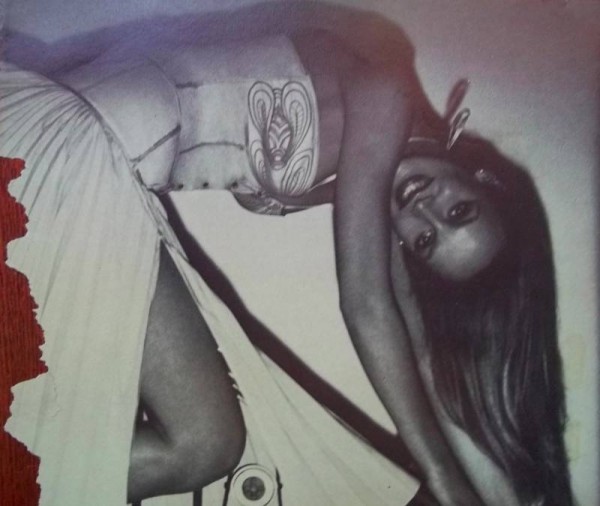
Bill Gibb bodice and skirt with embroidered bees (magazine cutting from 1970′ Vogue or Harpers & Queens)
The bee became Bill’s signature motif (bee for B. obviously) and they appeared in many different sizes, shapes, and materials. Above is his romantic long winged version and below are some embroidered on tweed and looking more like a bumble bee. He also used enamelled silver bee buttons on plain silk or, more flamboyantly, painted silver bees on to leather,
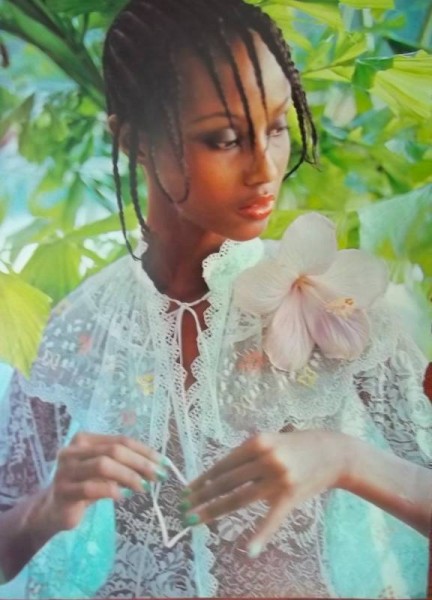
Bill Gibb: embroidered net (?) and lace (taken from 1970s’ magazine cutting, probably Vogue or Harpers & Queen). Photo possibly by Norman Parkinson.
John Galliano praised Bill Gibb as the “romantic essence of British style” in an article by Suzy Menkes.
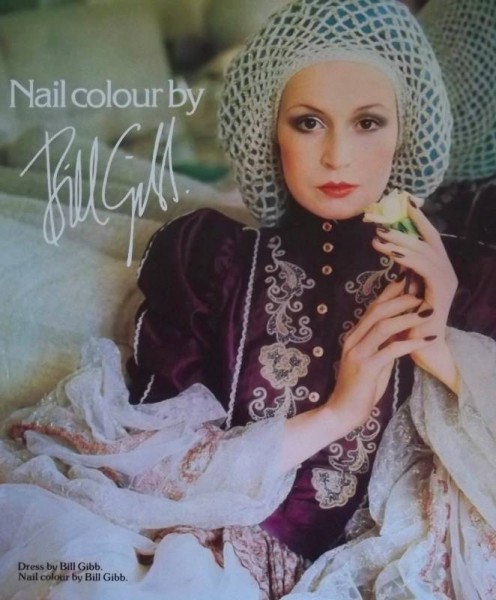
Bill Gibb: “Maroon moiré Victoriana jacket embroidered with gold, 3-petticoat bouffant skirt of embroidered net” (magazine cutting of an advert for nail varnish from the 1970s, either from Vogue or from Harpers & Queen.)
In 2008, on the back of the 2 retrospective exhibitions mentioned above, the Guardian declared that we were set for a Bill Gibb revival. I hope so. I’m still waiting.
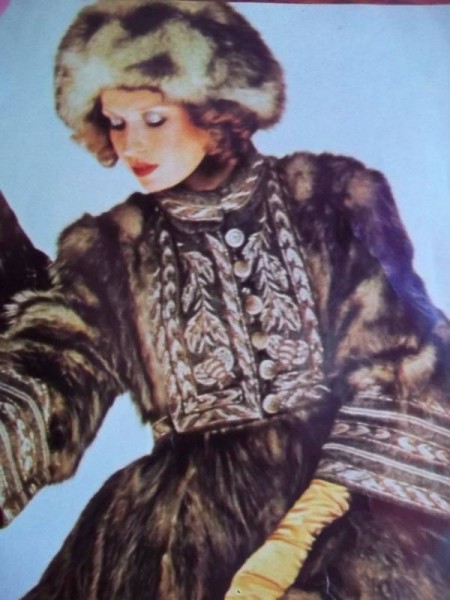
Bill Gibb: Opossum coat with yoke and cuffs of embroidered tweed. (Magazine cutting from the 1970s from either Vogue or Harpers & Queen. Photo: Norman Parkinson.)

